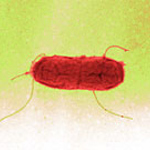You are here:
- Homepage
- The Institute
- Reference Laboratories
- NRL Salmonella
weitere Themen des BFR
Bereichsmenü: The Institute
- Mission statement
- Facts & Figures
- Our mandate
- BfR structure
- Working at the BfR
- Scientific Advisory Board
- Principles of Scientific Practice
- Databases
- GLP Federal Bureau
- Quality management
- Environmental Management
- The BfR-Commissions
- Co-operation
- National Breastfeeding Committee
- Reference Laboratories
- NRL for Foodborne Viruses
- NRL Monitoring of Marine Biotoxins
- NRL Campylobacter
- NRL E. Coli
- NRL Listeria monocytogenes
- NRL Trichinella
- NRL Antimicrobial Resistance
- NRL Halogenated Persistent Organic Pollutants (POPs) in Food and Feed
- NRL Salmonella
- NRL Coagulase-positive Staphylococci
- NRL Mycotoxins and Plant Toxins
- NRL Materials in contact with food
- NRL Animal Proteins in Feed
- NRL Additives for Use in Animal Nutrition
- Reference Laboratory of the network on genetically modified organisms (GVO)
- Senior Expert Office for the Import Control of Wine
- NRL for Food Additives and Flavourings
- Specialised laboratory for spore formers
- EFSA Focal Point
- German Centre for the Protection of Laboratory Animals (Bf3R)
NRL for Salmonella

The main task of the NRL for Salmonella is the identification and analysis of Salmonella isolates originating from feed, food and primary production, using serological and molecular biological methods. For conducting investigations of outbreaks and epidemiological studies, a variety molecular biological methods have been established. Within the World Organization for Animal Health, the NRL Salmonella is designated an OIE-reference laboratory.
Main areas of the NRL for Salmonella
- Serotyping of Salmonella according to the White-Kauffmann-Le Minor scheme
- Epidemiological surveys on the prevalence of Salmonella serotypes
- Taking part in the implementation of national (General Administrative Provision, AVV) and European monitoring programs
- Taking part in the national control programs for Salmonella (Directive 2003/99/EC and Regulation (EC) No 2160/2003) in breeding flocks of Gallus gallus (Commission Regulation (EU) No 200/2010), in laying hens of Gallus gallus (Commission regulation (EU) No 517/2011), in flocks of broilers (Commission regulation (EU) No 200/2012) and in flocks of turkeys (Commission regulation (EU) No 1190/2012)
- Conducting inter-laboratory studies and participation in ring trials/proficiency tests within the national control program for Salmonella
- Participation in investigations of chains of infection and foodborne outbreaks, e.g. by applying high-resolution techniques (e.g. whole genome sequencing)
- Identification of vaccine strains
- Rapid detection of Salmonella using PCR methods
- Molecular biological high resolution typing of Salmonella
- Participation in national and international research projects
- Providing advice and support to various institutions
- Management and maintenance of strain collections
- Participation in national and international committees
- Advising on and preparing scientific opinion statements
- Collaboration with the European Union Reference Laboratory for Salmonella
- Development and validation of methods
Opinion
(2)| Date | Title | Size |
|---|---|---|
|
01.11.2010 BfR Opinion Nr. 047/2010
|
Scientific assessment of resistance monitoring results in accordance with the zoonoses sample scheme 2009 |
30.6 KB
|
|
25.03.2009 BfR Opinion No. 049/2009
|
Results of the baseline study on the prevalence of Salmonella spp. in holdings of breeding pigs presented |
29.0 KB
|
Press releases
(8)| Date | Title | Keywords |
|---|---|---|
|
13.12.2010 18/2010
|
Antibiotic resistances in the food chain | |
|
17.03.2010 06/2010
|
Chickens frequently contaminated with Salmonella and Campylobacter | |
|
17.12.2009 35/2009
|
Salmonella widespread in pig breeding farms | |
|
05.03.2008 03/2008
|
New studies show: Salmonella problematic in the case of fattening pigs and turkeys, too | |
|
22.01.2007 01/2007
|
Broilers are frequently infected with salmonella | |
|
12.02.2005 06/2005
|
Salmonella in pork – still a risk | |
|
12.11.2004 14/2004
|
Fewer antibiotics, more hygiene | |
|
01.04.2003 08/2003
|
Antibiotic resistance of germs in meat production too high |
